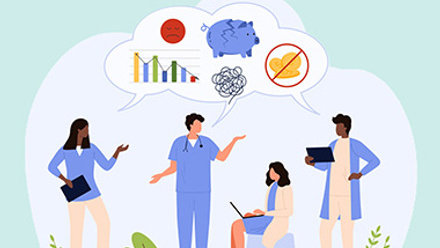How data is driving wellbeing strategy at Lloyds Banking Group
Most banking groups are changing to be more digitally relevant and grow their businesses. There is probably more change now than we’ve seen since the 2008 financial crash. But it’s a very different change. Back then, it was about being risk-averse and rebuilding societal trust in financial services. Now, it’s about diversifying and growing.
Since we emerged from the pandemic, we have taken a step back and looked at how we deliver wellbeing support to our colleagues and whether that is fit for the business, and how we align our health and wellbeing strategy to the needs of the business. Lloyds Banking Group is in the middle of a significant strategic change programme.
We’ve taken great care to align our wellbeing strategy to that. Now that we’re in the phase where the changes we have planned are starting to land, we are revisiting our wellbeing strategy to support colleagues with the effects of those changes. DEI strategy, artificial intelligence strategy – these are all changing fast and it’s an exciting time.
Data is one of the main drivers of our strategy, and understanding different data points is key. We use our survey results, HR data and electronic data interchange (EDI) records, alongside external data, to formulate priorities as we pursue our strategies. For me, data is a key lever to almost commercialise the benefits programme. I need to articulate to the business the benefits of levelling up our wellbeing support.
Our data has also told us that a massive proportion of our workforce is over the age of 50. We know we need to support our colleagues as they prepare for those later stages of their careers. There is an awful lot for the organisation to gain from capturing the skills of older members of the workforce, too.
Individual needs
Data is core for us in providing bespoke wellbeing for specific areas of our business. We’re looking at preventative healthcare, but I also need to be able to demonstrate to the business the commercial benefits and the return on our investment. We need to be able to meet the individual needs of different groups within the organisation.
Someone working in a head office role will have very different wellbeing needs from someone facing customers each day, who may be more exposed to germs and have a higher absence rate. They also potentially face difficult conversations with vulnerable customers, which could have an impact on their mental health needs.
We run week-long wellbeing festivals at different locations, with kiosks allowing colleagues to self-assess and set themselves targets. These also provide the opportunity to gather data – to understand engagement levels, our return and whether or not there are any tangible differences off the back of it.







